#HashtagThis: Social Commerce Trends

Social media has changed everything we ever thought or knew about online marketing. In a sense, there is a little bit of irony here. That’s because the early, fledgling days of the internet were actually all fed by social media. What’s that you wonder … how is this possible? Because AOL was really the first ISP. If you recall those bulky CDs that would come in the mail promising you so many “free trial minutes” (yes, you paid by the minute to use terrible dial-up services to access the internet, way back in the day), then you already know what we are talking about.
Basically, the internet began as a social commerce platform that was powered by AOL and its rival, CompuServe (remember that age-old name?). Then, it fanned out and slowly became the information superhighway that it is during the present day. But, suddenly, along came the likes of Live Journal, Myspace, Blogger and, of course, Facebook and a long list of others.
Today, the web is dominated by thousands of social outlets, the majority of which remain as social bookmarking services. As marketplaces have expanded and ecommerce has taken center stage as the more convenient, always-open online shopping destination, newer social commerce trends are emerging. Here’s what you should look out for in 2016, a continuation of our previous run down of the most pertinent social commerce statistics from 2015.
Why Social Commerce is Important
Social commerce represents a vast portion of the revenue that’s generated by ecommerce. According to eMarketer, social commerce revenue has grown from a humble $5 billion in 2011 to eclipsing $30 billion in 2015, just four years later. Few other industries can tout such growth, as is illustrated for you in this chart below.
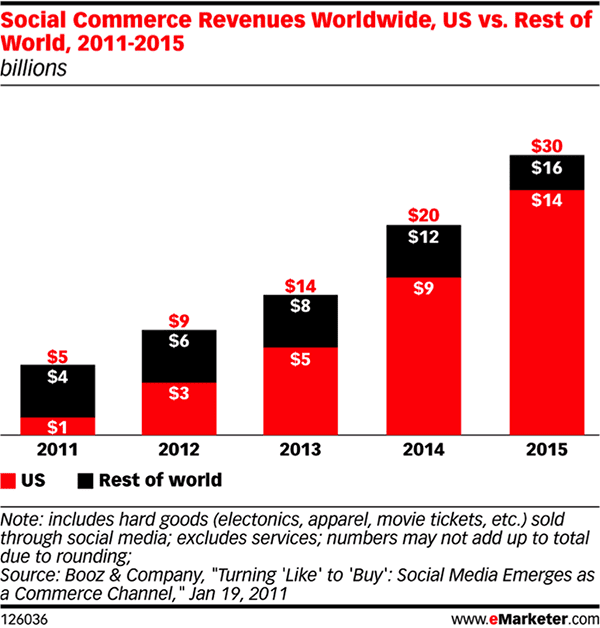
But the numbers are all changing. For the years 2014 all the way through 2018, revenue is predicted to increase by enormous margins. Fed, of course, by the innate consumer desire to shop online. In the U.S., it’s being predicted that ecommerce sales will balloon from the healthy $325 billion that was generated this past year all the way up to an estimated $414 billion by 2018. Of that number, social commerce will account for as much as 10% in the coming years.
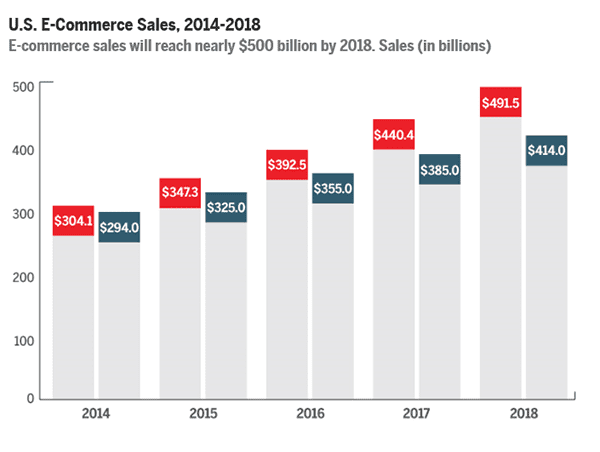
Recreates the Offline Shopping Experience
One of the reasons why social commerce trends have taken such a strong shape is because they recreate the offline shopping experience for consumers. According to YotPo, emotionally connected brands have more loyal shoppers and followers, and enjoy greater revenue streams as a result.
This is because these brands personalize the shopping experience, adding an emotional value and attachment that’s shared on social media, thus earning them loyalist consumers, who in turn many times also become evangelical brand ambassadors. A good example is the Share-a-Coke campaign, which personalizes the way that a soft drink can be purchased for a friend, and that has been screamingly successful as a direct result.

Curated Shopping Will Take Center Stage
Consumers have made it apparent that they want a curated shopping experience. Taking the bull by the horns are shopping services/sites like AhaLife. Their missions statement reads as such: “We scour the globe to find exceptional objects for every aspect of your life. Shop from 1,000+ designers and artisans in 45+ countries.” They also cater to the consumer demand for free shipping and hassle-free and complimentary return shipping on all orders.

Online Reviews Will Dominate Referral Traffic
Online reviews generate tons of referral traffic and help populate ecommerce sites with a steady stream of traffic, too. And they also are going to be one of the most prevalent social commerce trends that we see in 2016.
According to Econsultancy:
- 61% of customers read an online review before they make a purchasing decision.
- 63% of consumers are likelier to make a purchase from a website that has user reviews.
- 105% chance of a customer converting during a visit when customer questions and reviews are offered.
- Consumer reviews are 12 times more trusted than product descriptions.
- Reviews have the ability to produce at least an 18% uplift in sales on any given ecommerce site.
Pinterest Impulse Purchases Will Set New Trend
Pinterest has recently entered the fold as the newest social commerce platform. Previously, they were merely a cool image bookmarking service. But according to Proforma, the new “Buy Now” feature on Pinterest has the ability to reach the more than 2 million people who post pins daily.
What’s more, 93% of Pinterest users plan their purchases from the pins they find on the site, providing a viable $50 average referral order value. Expect all social media sites to generate substantial revenue in the coming year, with sites like Polyvore, Instagram, Pinterest, Facebook, Reddit and others leading the pack for greatest referral value, as is demonstrated in the below chart that reflects the current average order value of these sites.
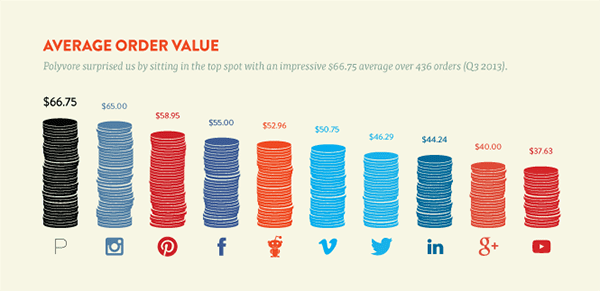
Omni-Channel Buying Will Be Underscored
Of course, we need not overlook the value of omni-channel buying as the most coveted of all emerging social commerce trends for this year. This notion is underscored by a Fast Up Front publication. They say that the top 500 retailers worldwide cashed in on a staggering $3.3 billion in revenue that was earned from omni-channel selling, namely driven by social commerce, and that was back in 2014. Imagine what that number will be just two years later?
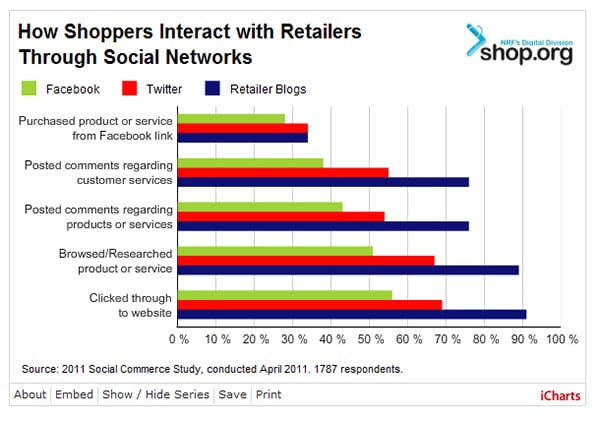
From 2013 to 2014, this massive growth represented a 26% year-over-year increase. By comparison, during that same time, ecommerce grew just 16%. However, social platforms were able to muster a strong referral increase to the tune of 200% in the same timeframe, telling of the profit and growth propensity for this marketing option. So what did 2015 look like? Take a look at this chart below to get a better idea. Then imagine what the year ahead holds.
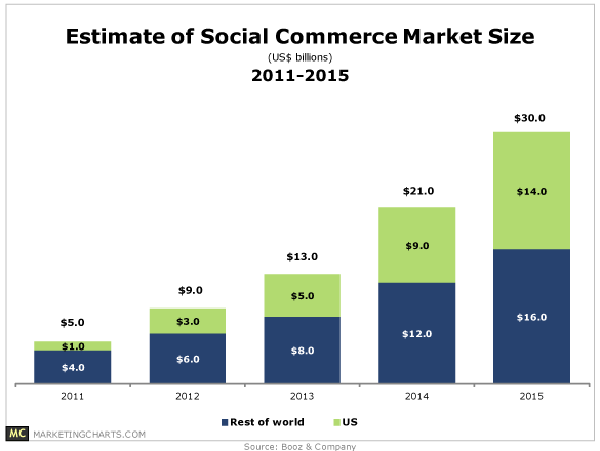
Social Commerce Will Rapidly Expand in 2016
Speaking of the market size, social commerce is set to explode this year, according to Marketing Tech News. Cited in their publication is a study of 100 UK marketers. The respondents yielded some rather interesting predictions for 2016.
- 52% say that social commerce will be the fastest growing trend this year.
- 49% say that location based marketing is the new trend for the New Year.
- 43% say that predictive targeting is the next big trend.
A quick look at current ecommerce revenue yields helps us better understand just how big a bite social commerce can chomp off ecommerce in 2016.
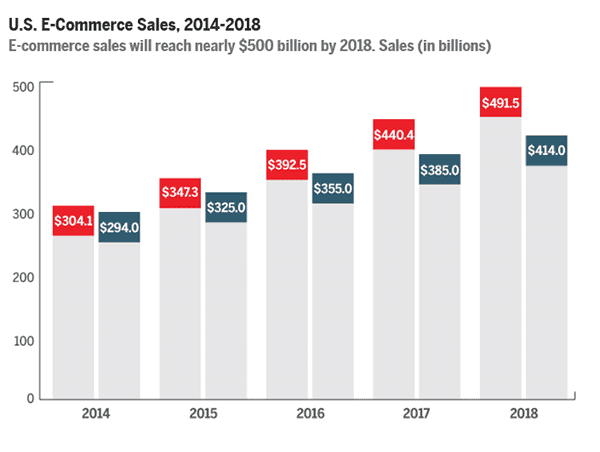
Social Commerce Will Grow to 5% of Ecommerce
To sweeten the pot even further, Social Media Today explains that social commerce made the leap from a $3 billion market share to an astounding $14 billion market share between 2012 and 2015. This amounted to 33% of consumers acting on a promotion they found on the social media channel of a particular brand. But, they also highlight the fact that Facebook was responsible for generating 85% of these referrals.
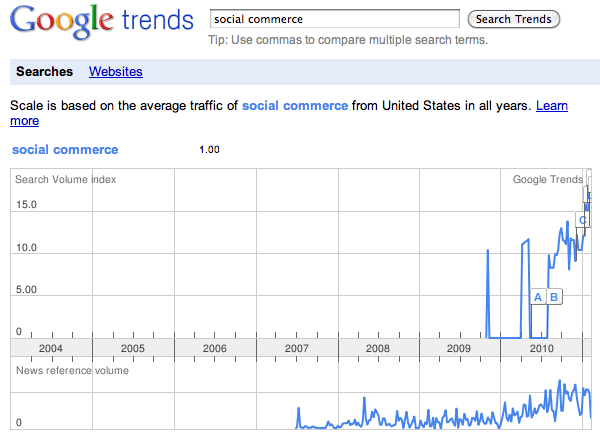
Social Networks Will Embrace Social Commerce
Think back to 2012, and there wasn’t a Facebook “Buy” button. There was not a way to make a purchase from something you saw on Twitter, much less even any ads to view. And, of course, Pinterest had no “Buy” buttons or sponsored pins, either.
But PFS Web says that these buttons have helped cement the ongoing future interest of social commerce moving forward. Facebook is currently testing a “Sell” feature, while Pinterest just added an “Install” button, and Twitter is in testing out their very own “Buy” button. Imagine what the future holds when you can shop from your preferred social media outlet in just a few clicks?
Growth Will Exceed 25%
With all of these social commerce trends and predictions, what about real projected growth?
A September 15th, 2015 Business Daily Article interview a few leading experts to get their take on it. This is what the industry leaders predicted.
“Most [e-commerce companies] have both their social network and a ‘store’ in their hands, and social commerce provides a new channel to enable a transaction,” said Dan Forno, vice president of client success and consumer engagement at BrandShop, a provider of branded digital commerce solutions. “This will be a great opportunity to engage with consumers in a way that is both brand-building and profitable.”
“Shopping is inherently social, but this aspect has disappeared in recent years due in equal measure to the growth in ecommerce and an ever-growing list of consumer distractions and obligations,” added Liat Zakay, founder of the Donde Fashion search engine app. “Advances in social commerce are bringing the fun and sense of community back to shopping, but instead of in malls, [people] are shopping from their phones … on the timelines and terms that work for their busy schedules.”
And we leave you with this infographic on Social Commerce Trends that was created by InvesP. If you are looking for even more information on this topic, make sure you give our guide to Social Commerce Statistics You Shouldn’t Ignore a quick read.

Share On:








